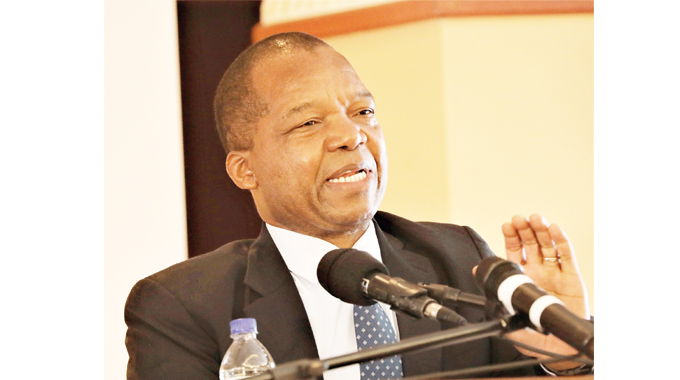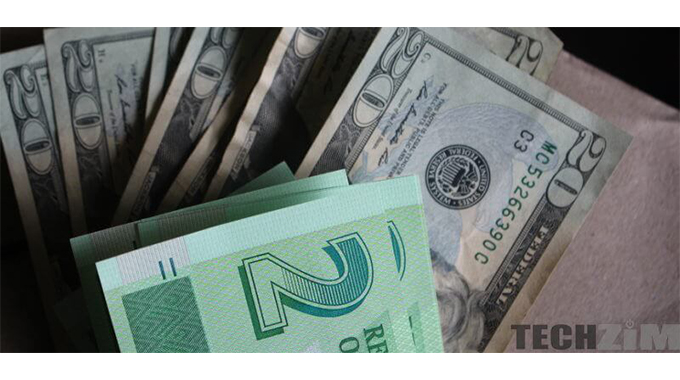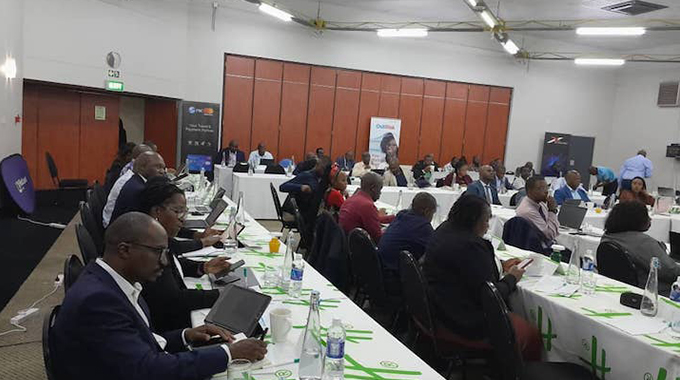Exchange rate cleavage narrows

Nqobile Bhebhe, Senior Business Reporter
THE narrowing of the gap between parallel market and official exchange rates from an elevated level of 140 percent in May to current levels of between five percent and 15 percent is a significant move towards eliminating arbitrage opportunities, which were fuelling forward pricing models and inflationary pressures, Reserve Bank of Zimbabwe (RBZ) governor, Dr John Mangudya, has said.
This week the official exchange rate is pegged at $621.5 at the Foreign Currency Auction System compared to parallel market rates of between $700 to $850 per US-dollar. In the past, the gap between the two used to be almost double that of the official rate.
The latest market stability has been commended by business leaders and economic analysts who attribute this to the effectiveness of corrective policy measures by the Government.
These include the tightening of money supply and lending rates, introduction of gold coins, enhanced formal foreign exchange auction system, adoption of value for money system for Government contractors and supplier, among others, which have been credited for restoring market discipline by limiting rate pass-through effects on inflation.
Following a recent Monetary Policy Committee (MPC) meeting, Dr Mangudya said the Apex Bank was impressed with the positive outcomes.
“The MPC expressed satisfaction with the positive impact of the recent policy measures, which have resulted in the significant fall of month-on-month inflation from 12.4 percent in August 2022 to 3.47 percent in September 2022,” he said in an outcome statement issued Tuesday.
“The decline in month-on-month inflation has in turn resulted in the decline in annual inflation to 280.4 percent in September 2022, down from 285.1 percent in August 2022.”

Dr John Mangudya
On the exchange rates, Dr Mangudya said the committee expressed satisfaction with the progress registered on the convergence of the parallel market and willing-buyer willing-seller foreign exchange rates.
“The foreign exchange rate premium has significantly declined from an elevated level of 140 percent in May 2022 to current levels of between five percent and 15 percent, which is consistent with regional and international norms,” said Dr Mangudya.
“This positive development on the exchange rate front is envisaged to go a long way in eliminating arbitrage opportunities, which were fueling forward pricing models and hence fomenting adverse inflation and exchange rate expectations.”
The committee had projected annual inflation to start tapering in this month, having earlier reached its plateau in August. Economic observers have hailed the recent stability in prices of basic goods and services, which have seen some commodities such as fuel and cooking oil continuing to fall following adoption of corrective measures by the Government and the central bank.
Dr Mangudya said the committee is committed to ensuring that the current disinflation trend is sustained, in both the short and long-term, through the maintenance of the tight monetary policy stance.
He said the committee expressed confidence that the prevailing favourable external sector environment, as reflected by robust performance in foreign currency receipts, will provide further impetus to the achievements relating to the exchange rate and price stability.
“Foreign currency receipts stood at US$7.7 billion as at 31 August 2022, representing a 32.4 percent increase from US$5.8 billion recorded during the same period in 2021.
“The foreign currency receipts compare favourably with the corresponding foreign payments which amounted to US$5.1 billion as at 31 August 2022, translating into a surplus foreign exchange position with attendant positive implications for external sector stability,” said Dr Mangudya.

RTGS and USD money
To that end, the committee resolved to maintain the bank policy rate and medium-term lending rate at current levels of 200 percent and 100 percent, respectively.
The rate would be maintained until durable stability, measured by a sustained decline in month-on-month inflation to desired levels of less than five percent is attained.
The committee also resolved to further liberalise the foreign exchange market by increasing the maximum amount that entities can purchase from banks for bona fide foreign payments under the willing-buyer willing-seller system from the current level of US$20 000 to US$100 000 per week per entity.
In June, RBZ increased interest rate for loans to 200 percent per annum from 80 percent citing the need to align these with prevailing inflationary developments among other latest measures meant to tame exchange rate distortions and price volatility. -@nqobilebhebhe











Comments